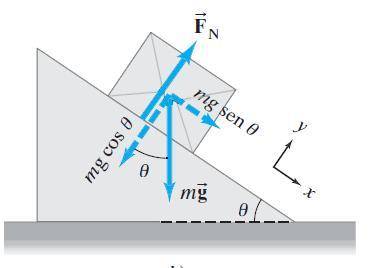
Physics, 02.11.2019 04:31, genesisramirezozfyj7
Show that the acceleration of any object down an incline where friction behaves simply (that is, where fk=μkn ) is a=g(sinθ−μkcosθ). note that the acceleration is independent of mass and reduces to the expression found in the previous problem when friction becomes negligibly small (μk=0).

Answers: 2
Other questions on the subject: Physics

Physics, 22.06.2019 14:30, ayoismeisalex
Two carts, one of mass 2m and one of mass m, approach each other with the same speed, v. when the carts collide, they hook together. assume that positive momentum is to the right. which graph best represents the momentum of both carts over time, before and after the collision?
Answers: 3

Physics, 22.06.2019 17:30, realoneree
This chart shows characteristics of three different types of waves. which statement is best supported by the information in the chart? wave x and wave y are mechanical waves, and wave z is an electromagnetic wave. wave x and wave y are electromagnetic waves, and wave z is a mechanical wave. wave x and wave z are electromagnetic waves, and wave y is a mechanical wave. wave x and wave z are mechanical waves, and wave y is an electromagnetic wave.
Answers: 1

Do you know the correct answer?
Show that the acceleration of any object down an incline where friction behaves simply (that is, whe...
Questions in other subjects:

Chemistry, 07.11.2020 14:00

English, 07.11.2020 14:00

Biology, 07.11.2020 14:00


Mathematics, 07.11.2020 14:00


Biology, 07.11.2020 14:00

Biology, 07.11.2020 14:00

Mathematics, 07.11.2020 14:00

Chemistry, 07.11.2020 14:00







